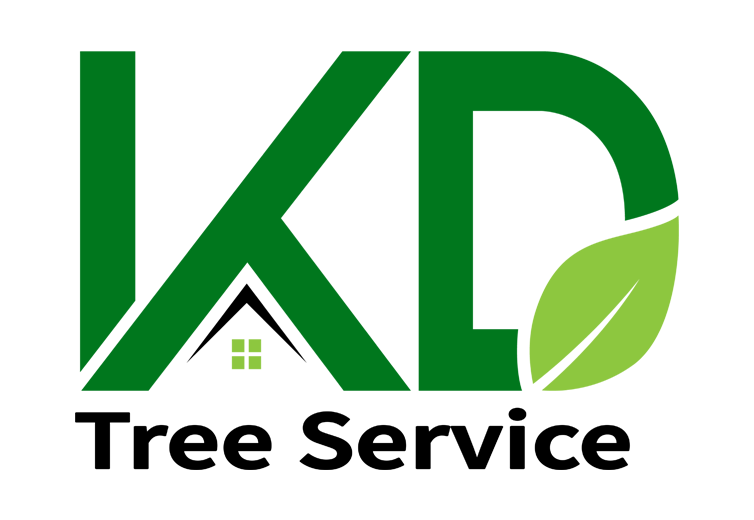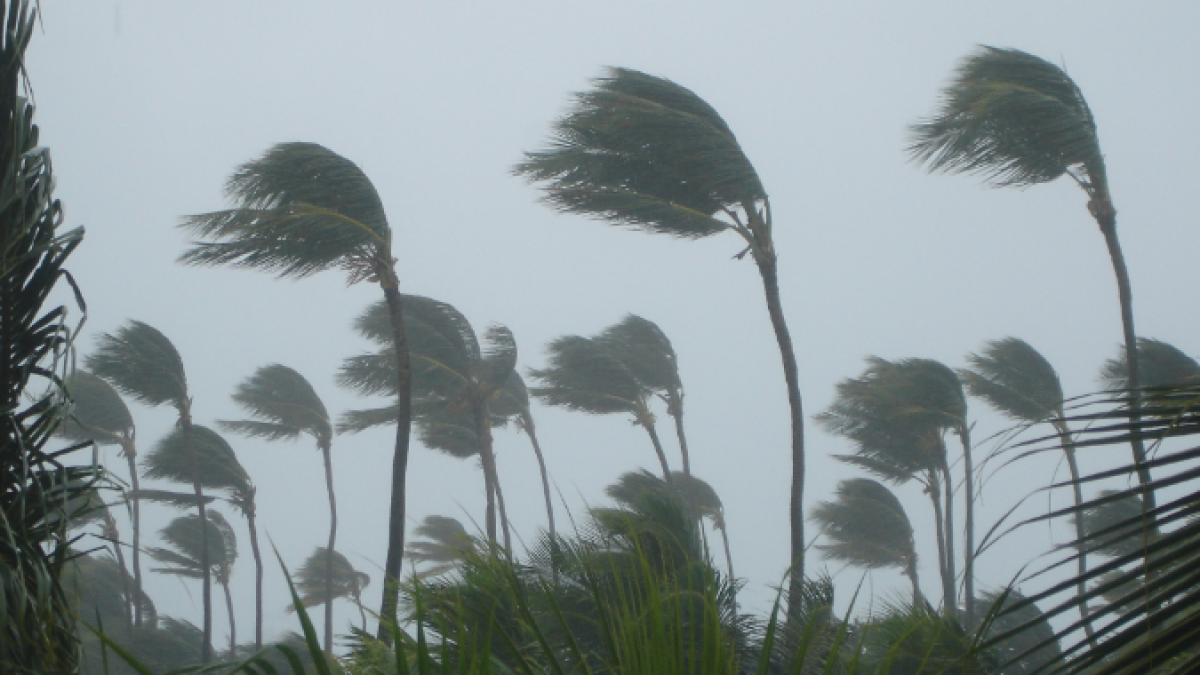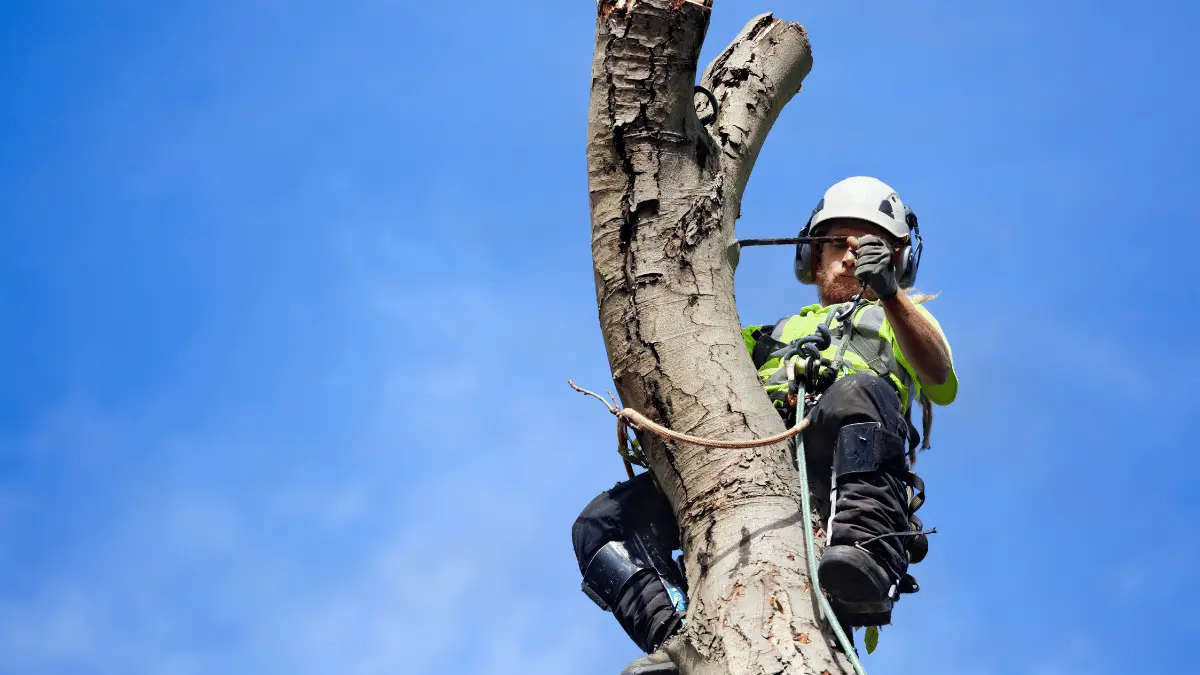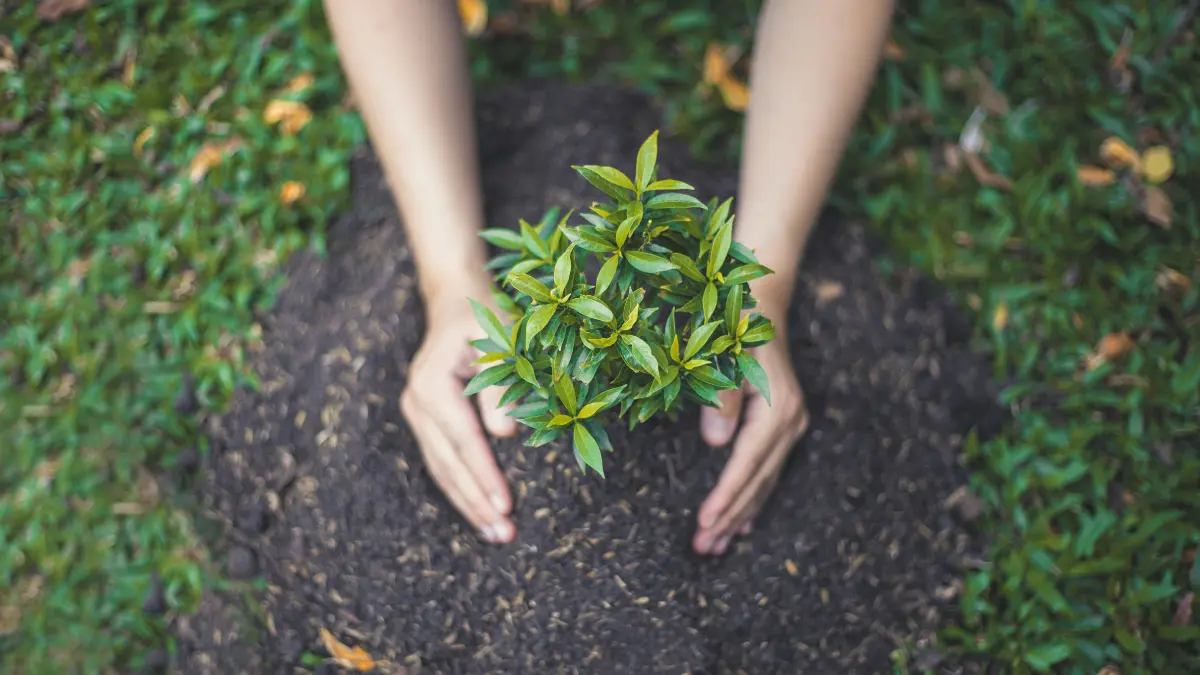Binghamton, New York, experiences storms on a regular basis. Intense weather, ranging from extreme snow and ice to high gusty winds and heavy rain, has the potential to wipe out your plant collection. A bad storm can leave you with weakened limbs and uprooted trunks and branches that fall from the tree, packing a serious punch at times, causing damage to homes or power lines, or worse, your fellow man. With that being said, proactive tree management can reduce the risk.
In this blog, we will show you how to prevent storm-related tree hazards in Binghamton, NY. We’ll go over tree safety, storm preparation, and proper tree maintenance. These suggestions will help you fortify your trees and make your landscape safer, regardless of whether you are a property manager, company owner, or homeowner.

The Importance of Tree Safety Prior to a Storm
Trees with structural problems might quickly become dangerous during storms. Dead limbs can be snapped by strong winds, branches can be weighed down by ice until they break, and trees can tumble over wet ground because their roots become weaker.
Even one unsteady tree can have a domino effect in a densely populated city like Binghamton, causing electrical wires to fall, fences to be damaged, or cars to be crushed. Tree safety Binghamton, NY, should therefore never be disregarded. Protecting your family and property can be achieved with a little preparation.
Step 1: Conduct a Tree Inspection First
Examining your trees is a wonderful place to start while preparing for a storm. Before they become emergencies, a thorough tree check can help identify potential issues, decay indicators, and structural concerns.
What to look for is as follows:
- Broken or dead branches
- Cracks in the trunk
- Unusual bending of trees
- Soil movement or injury to the roots
- Fungus development or obvious deterioration
- Canopies that are thick and easily collect wind
It is wise to have a professional tree risk assessment done for large or mature trees. Qualified arborists are able to identify minor warning indicators and suggest appropriate actions to prepare your trees for storms.
Step 2: Pruning Trees for Strength and Safety
Tree trimming is the most efficient strategy to ensure their safety before harsh weather arrives. Damaged or hazardous branches that are more likely to fall in the event of wind or snow are removed by proper pruning.
Tree Pruning Advantages:
- Reduces resistance to wind
- Removes weak or dead limbs
- Enhances the tree’s balance and form.
- Promotes robust, healthful growth
Tree cutting, when done correctly, contributes to increased storm resilience. Pruning should ideally take place in late winter or early spring, but it can be done at any time if there is an imminent risk.
Employ professionals who provide storm-proof tree services Binghamton for the greatest outcomes. They will expertly and carefully prune your trees because they are familiar with the local tree species and weather trends.
Step 3: When Required, Remove High-Risk Trees
It’s simply unsafe to have some trees around. If a tree has unstable roots, is extremely diseased, or leans badly, it might be advisable to remove it before nature takes care of it for you.
Indications That Tree Removal May Be Necessary:
- Large voids or trunks that are hollow
- Serious fungal or trunk rot
- More than 15 degrees of lean
- significant root damage brought on by weather or building
- No regeneration of leaves on dead trees
Although it’s not always simple, there are situations where removing a tree is the only safe course of action. If in doubt, get in touch with a Binghamton, NY tree hazard prevention expert, who can evaluate the situation and, if necessary, safely remove the tree.
Step 4: Select Trees That Can Withstand Storms for New Plantings
Make an informed decision if you’re putting new trees in your yard or property. Certain species are more resilient to storms by nature. Choosing the proper species is important in Binghamton because of the city’s changeable weather.
Binghamton, New York’s Top Storm-Resistant Trees:
- White Oak (Quercus alba) – Known for its strength and deep roots
- Serviceberry (Amelanchier spp.) – Small size and flexible branches
- Black Gum (Nyssa sylvatica) – Handles strong winds well.
- Eastern Redbud (Cercis canadensis) – Compact and hardy
- Sugar Maple (Acer saccharum) – Resilient and cold-tolerant
Avoid quick-growing trees with weak wood like Silver Maple or Bradford Pear, which are more prone to breaking.
Long-term tree safety in Binghamton, New York, is aided by selecting storm-resistant trees and placing them in strategic locations. Make sure they have plenty of room to move away from houses, electricity lines, and sidewalks.
Step 5: Keep Trees Healthy All Year Long
Tree care is a continuous process. Regular tree care keeps your trees robust and healthy, which improves their ability to withstand storm-related stress.
Tips for Year-Round Tree Care:
- Mulch the base to keep moisture in and shield the roots.
- During dry seasons, water frequently, especially for newly planted plants.
- If your soil is deficient in nutrients, fertilize.
- Do not use string trimmers or lawn equipment that could harm trunks.
- Check trees frequently for diseases or pests.
Your best line of defense against storm damage is a healthy tree. You may avoid future expensive problems by maintaining your system consistently now.
Step 6: Prepare for and Respond to Emergencies
Despite your best efforts, storm damage might still occur. Having a plan in place for when severe weather strikes is crucial because of this.
Following a Storm:
- Stay away from hanging branches and downed electrical wires.
- Take pictures of any damage for your insurance records.
- For emergency or cleanup services, get in touch with a certified arborist.
- Avoid using chainsaws or removing trees unless you are trained to do so.
Storm-proof tree services Binghamton, including emergency response, are offered by numerous local businesses in Binghamton. Response time and safety can be significantly improved by having a reliable service on hand.
Step 7: Consult with Local Tree Professionals
Local expertise is essential when it comes to storm preparation for trees in Binghamton. Local certified arborists are familiar with the trees, soil, and climate of the area.
Why Employ an Arborist in Your Area?
- They are aware of the climate and tree maintenance requirements in Binghamton.
- knowledgeable about invasive species and natural trees
- Stay informed about pruning methods and safety regulations.
- Having the appropriate insurance and licensing for risky employment
Local professionals offer services such as tree trimming, tree inspection, and full tree risk assessments. Working with someone who understands your local conditions is the best way to ensure storm preparation and tree safety.
FAQs

How can I determine whether a tree poses a storm risk?
Keep an eye out for any indications of degradation, bent trees, dead limbs, or fissures in the trunk. Verifying whether there is a genuine safety issue might be aided by a reliable tree inspection.
Can “storm-proof” trees lower storm damage in real life?
Yes, they can. Choosing storm-proof trees that have sturdy root systems and flexible branches will greatly increase the storm-resistance of your property.
Is it necessary to hire an arborist?
To get the top result, yes. Trustworthy tree services and comprehensive tree risk assessment are provided by certified arborists in Binghamton.
Are You Prepared to Begin?
Speak with a tree safety team in Binghamton, New York, if you’re concerned about the state of your trees or need assistance preparing for storm season. To get you started, many businesses offer complimentary consultations or on-site evaluations.
For knowledgeable guidance, competent treatment, and dependable storm-proof tree services in Binghamton, give KD Tree Services a call right now at (518) 425-TREE.
Take control of your landscaping today to keep your property safe, green, and storm-ready throughout the year. Don’t wait for the next storm warning.









